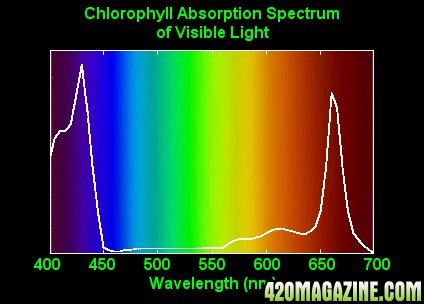G-Dog
New Member
In nature, for sativas in the tropics they do not have seasons. At least season of varying hours of light in the day. The closer to the equator you get the closer you get to 12 hours of light all year long. The reason that folks want the colors that lean more towards the oranges and reds is to simulate the colors that happen in nature in the fall and winter when the sun is at a different angle and more of the redder spectrum is present.
I have seen people talk about increasing trichome production on sativas by switching to MH lights over HPS, for instance, and I agree that the theory holds water.
One of my best grows that I ever had I had two 400 watt HIDs. One was MH and the other was HPS. I moved the plants around frequently. And in all honestly, I do not know if my mixed spectrum lighting made a difference or not, but I sort of think so. I do not know if all the CO2 I was trying to supply them helped at all either. It was a good grow, but I think it was just making sure they had plenty of light, nutrients and the correct amount of water and air circulation.
One thing I like to note is that all the plants are a bit different in their needs. Some plants clone with no effort, some don't want to clone at all, some bounce back from severe stress and other not. The best thing to do is find a plant, learn from it and adapt to it. If you think you need more light add it. If you think you need more less nutrients, make that adjustment. Once you get that plant dialed in you are golden. Add another strain to the harem and you may have to start all over or treat them all differently.
I have seen people talk about increasing trichome production on sativas by switching to MH lights over HPS, for instance, and I agree that the theory holds water.
One of my best grows that I ever had I had two 400 watt HIDs. One was MH and the other was HPS. I moved the plants around frequently. And in all honestly, I do not know if my mixed spectrum lighting made a difference or not, but I sort of think so. I do not know if all the CO2 I was trying to supply them helped at all either. It was a good grow, but I think it was just making sure they had plenty of light, nutrients and the correct amount of water and air circulation.
One thing I like to note is that all the plants are a bit different in their needs. Some plants clone with no effort, some don't want to clone at all, some bounce back from severe stress and other not. The best thing to do is find a plant, learn from it and adapt to it. If you think you need more light add it. If you think you need more less nutrients, make that adjustment. Once you get that plant dialed in you are golden. Add another strain to the harem and you may have to start all over or treat them all differently.






 !
! Going to look into them myself as well now.
Going to look into them myself as well now.

 G-Dog!
G-Dog!
 )
)
 on your trails and conclusions.
on your trails and conclusions.